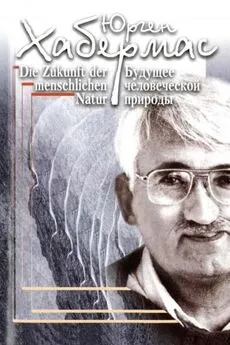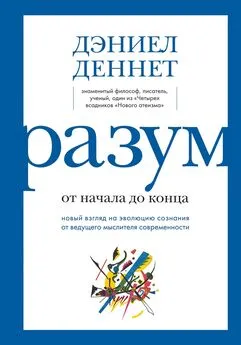Джеффри Миллер - Соблазняющий разум [Как выбор сексуального партнера повлиял на эволюцию человеческой природы] [litres]
- Название:Соблазняющий разум [Как выбор сексуального партнера повлиял на эволюцию человеческой природы] [litres]
- Автор:
- Жанр:
- Издательство:Литагент Corpus
- Год:2020
- Город:Москва
- ISBN:978-5-17-982778-8
- Рейтинг:
- Избранное:Добавить в избранное
-
Отзывы:
-
Ваша оценка:
Джеффри Миллер - Соблазняющий разум [Как выбор сексуального партнера повлиял на эволюцию человеческой природы] [litres] краткое содержание
Соблазняющий разум [Как выбор сексуального партнера повлиял на эволюцию человеческой природы] [litres] - читать онлайн бесплатно ознакомительный отрывок
Интервал:
Закладка:
Sperber D. The modularity of thought and the epidemiology of representations // L. A. Hirschfeld & S. A. Gelman (eds.). Mapping the mind. Cambridge University Press, 1994.
Stanford C. The hunting apes: Meat eating and the origins of human behavior . Princeton University Press, 1999.
Stanyon R., Consigliere S., Morescalchi M. A. Cranial capacity in hominid evolution . Human Evolution. 1993; 8: 205–216.
Sterelny K., Griffiths P. E. Sex and death: An introduction to philosophy of biology . University of Chicago Press, 1999.
Sternberg R. J. (ed.). Handbook of creativity . Cambridge University Press, 1999.
Sternberg R. J., Barnes M. L. (eds.). The psychology of love . New Haven, CT: Yale University Press, 1988.
Stringer C., McKie R. African exodus: The origins of modern humanity . London: Jonathan Cape, 1996.
Studd M. V. Sexual harassment // D. M. Buss & N. M. Malamuth (eds.). Sex, power, conflict: Evolutionary and feminist perspectives. Oxford University Press, 1966.
Sulloway F. J. Freud, biologist of the mind: Beyond the psychoanalytic legend . New York: Basic Books, 1979.
Symons D. The evolution of human sexuality . Oxford University Press, 1979.
Symons D. Beauty is in the adaptations of the beholder: The evolutionary psychology of human female sexual attractiveness // P. R. Abrahamson & S. D. Pinker (eds.). Sexual Nature / Sexual Culture. University of Chicago Press, 1995.
Talbot M. M. Language and gender . Cambridge: Polity Press, 1998.
Tannen D. You just don’t understand: Women and men in conversation . London: Virago, 1991.
Tassinary L. G., Hansen K. A. A critical test of the waist-to-hip ratio hypothesis of female attractiveness . Psychological Science. 1998; 9: 150–155.
Taylor T. The prehistory of sex . London: Fourth Estate, 1996.
Tessman I. Human altruism as a courtship display . Oikos. 1995; 74(1): 157–158.
Thieme H. Lower Paleolithic hunting spears from Germany . Nature. 1997; 385: 807–810.
Thornhill R. The concept of an evolved adaptation // G. R. Bock & G. Cardew (eds.). Characterizing human psychological adaptations. New York: John Wiley, 1997.
Thornhill R. Darwinian aesthetics // C. Crawford & D. Krebs (eds.). Handbook of evolutionary psychology. Mahwah, NJ: Erlbaum, 1998.
Thornhill R., Gangestad S. W. Fluctuating asymmetry and human sexual behavior . Psychological Science. 1994; 5: 297–302.
Thornhill R., Gangestad S. W. The evolution of human sexuality . Trends in Ecology and Evolution. 1996; 11: 98–102.
Thornhill R., Grammer K. The body and face of woman: One ornament that signals quality? Evolution and Human Behavior. 1999; 20: 105–120.
Thornhill R., Thornhill N. W. The evolutionary psychology of men’s coercive sexuality . Behavioral and Brain Sciences. 1992; 15: 363–421.
Tiger L. The pursuit of pleasure . Boston: Little, Brown, 1992.
Todd P. M., Miller G. F. On the sympatric origin of species: Mercurial mating in the Quicksilver Model // R. K. Belew & L. B. Booker (eds.). Proceedings of the Fourth International Conference on Genetic Algorithms. San Mateo, CA: Morgan Kaufmann, 1991.
Todd P. M., Miller G. F. Parental guidance suggested: How parental imprinting evolves through sexual selection as an adaptive learning mechanism . Adaptive Behavior. 1993; 2(1): 5–47.
Todd P. M., Miller. G. F. How cognition shapes cognitive evolution . IEEE Expert: Intelligent systems and their applications. 1997a; 12(4): 7–9.
Todd P. M., Miller G. F. Biodiversity through sexual selection // C. G. Langton & K. Shimohara (eds.). Artificial Life V. Cambridge, MA: MIT Press, 1997b.
Todd P. M., Miller G. F. From Pride and Prejudice to Persuasion: Satisficing in mate search // G. Gigerenzer & P. Todd (eds.). Simple heuristics that make us smart. Oxford University Press, 1999.
Tooby J. Pathogens, polymorphism, and the evolution of sex . Journal of Theoretical Biology. 1982; 97: 557–576.
Tooby J., Cosmides L. On the universality of human nature and the uniqueness of the individual: The role of genetics and adaptation . Journal of Personality. 1990a; 58: 17–67.
Tooby J., Cosmides L. The past explains the present: Emotional adaptations and the structure of ancestral environments . Ethology and Sociobiology. 1990b; 11(4/5): 375–424.
Tooby J., Cosmides L. The psychological foundations of culture // J. H. Barkow et al. (eds.). The adapted mind. Oxford University Press, 1992.
Tooby J., Cosmides L. Friendship and the banker’s paradox: Other pathways to the evolution of adaptations for altruism . Proceedings of the British Academy. 1996; 88: 119–143.
Trail P. W. Why should lek-breeders be monomorphic? Evolution. 1990; 44(7): 1837–1852.
Trivers R. The evolution of reciprocal altruism . Quarterly Review of Biology. 1971; 46: 35–57.
Trivers R. Parental investment and sexual selection // B. Campbell (ed.). Sexual selection and the descent of man 1871–1971. Chicago: Aldine, 1972.
Trivers R. Parent-offspring conflict . American Zoologist. 1974; 14: 249–264.
Turing A. M. Computing machinery and intelligence . Mind. 1950; 59: 433–460.
Turner F. Beauty: The value of values . Charlottesville, VA: University of Virginia Press, 1991.
Veblen T. The theory of the leisure class . New York: Macmillan, 1899. (Reprinted by Dover.)
Vernon P. E. (ed.). Creativity: Selected readings . Harmondsworth: Penguin, 1970.
Vining D. R. Social versus reproductive success: The central theoretical problem of human sociobiology. Behavioral and Brain Sciences. 1986; 9: 167–216.
Von Neumann J., Morgenstern O. Theory of games and economic behavior. Princeton University Press, 1944.
de Waal F. Peacemaking among primates . Cambridge, MA: Harvard University Press, 1989.
de Waal F. Good natured: The origins of right and wrong in humans and other animals . New York: Harper Perennial, 1996.
de Waal F., Lanting F. Bonobo: The forgotten ape. Berkeley, CA: University of California Press, 1997.
Wagenaar W. A. Generation of random sequences by human subjects: A critical survey of literature. Psychological Bulletin. 1972; 77: 65–72.
Wallace R. A. How they do it . New York: William Morrow, 1980.
Wallin N. L., Merker B., Brown S. (eds.). The origins of music . Cambridge, MA: MIT Press, 1999.
Whiten A. (ed.). Natural theories of mind. Oxford: Basil Blackwell, 1991.
Whiten A., Byrne R. Machiavellian intelligence II: Extensions and evaluations. Cambridge University Press, 1997.
Wickett J. C., Vernon P. A., Lee D. H. In vivo brain size, head perimeter, and intelligence in a sample of healthy adult females . Personality and Individual Differences. 1994; 16: 831–838.
Wiegmann D., Real L. A., Capone T. A., Ellner S. Some distinguishing features of models of search behavior and mate choice . American Naturalist. 1996; 147: 188–204.
Wilkinson G. S. Reciprocal food sharing among vampire bats. Nature. 1984; 308: 181–184.
Williams G. C. Adaptation and natural selection . Princeton University Press, 1966.
Williams G. C. Sex and evolution . Princeton University Press, 1975.
Williams G. C. Plan and purpose in nature. London: Weidenfeld & Nicholson, 1996.
Williams J. E., Satterwhite R. C., Saiz J. L. The importance of human psychological traits: A cross-cultural study . New York: Plenum Press, 1998.
Wilson D. S. Adaptive genetic variation and human evolutionary psychology . Ethology and Sociobiology. 1994; 15: 219–235.
Wilson D. S., Near D., Miller R. R. Machiavellianism: A synthesis of the evolutionary and psychological literatures . Psychological Bulletin. 1996; 119: 285–299.
Wilson E. O. Sociobiology: The new synthesis . Cambridge, MA: Harvard University Press, 1975.
Wilson E. O. Consilience: The unity of knowledge . New York: Knopf, 1998.
Wilson M., Daly M. Competitiveness, risk taking, and violence: The young male syndrome . Ethology and Sociobiology. 1985; 6: 59–73.
Wittelson S. F., Glezer I. I., Kigar D. L. Women have greater density of neurons in posterior temporal cortex . Journal of Neuroscience. 1995; 15: 3418–3428.
Wolfe J. B., Moore A. J., Brodie E. D. The evolution of indicator traits for parental quality: The role of maternal and paternal effects . American Naturalist. 1997; 150: 639–649.
Wolfe T. From Bauhaus to our house . London: Jonathan Cape, 1982.
Wolpert L. The unnatural nature of science . London: Faber & Faber, 1992.
Wrangham R., Peterson D. Demonic males: Apes and the origins of human violence . New York: Houghton Mifflin, 1996.
Wright R. The moral animal: Evolutionary psychology and everyday life . New York: Pantheon Books, 1994.
Wright W. Born that way: Genes, behavior, personality . New York: Knopf, 1998.
Zahavi A. Mate selection: A selection for a handicap . Journal of Theoretical Biology. 1975; 53: 205–214.
Zahavi A. Decorative patterns and the evolution of art . New Scientist. 1978; 19: 182–184.
Zahavi A. On the definition of sexual selection, Fisher’s model, and the evolution of waste and of signals in general . Animal Behavior. 1991; 42(3): 501–503.
Zahavi A., Zahavi A. The handicap principle: A missing piece of Darwin’s puzzle . Oxford University Press, 1997.
Ziman J. Reliable knowledge . Cambridge University Press, 1978.
Ziman J. (ed.). Technological innovation as an evolutionary process . Cambridge University Press, 2000.
Zuckerman M. Behavioral expressions and biosocial bases of sensation seeking . Cambridge University Press, 1994.
Примечания
1
Когда издательство Corpus предложило мне написать предисловие к книге Миллера, я вспомнил, что фактически уже сделал нечто подобное 10 лет назад (см.: Александр Марков, “Эволюция человека”, том 1, глава 7 “Происхождение человека и половой отбор”). Впрочем, сегодня, когда я говорю об этой книге, интонации невольно получаются другими: чуть менее восторженными, чуть более ностальгическими.
2
О нескольких экспериментальных исследованиях, в которых проверяли те или иные проверяемые следствия полового отбора, рассказано в нашей с Еленой Наймарк книге “Перспективы отбора. От зеленых пеночек и бессмысленного усложнения до голых землекопов и мутирующего человечества”.
3
“Зачем” в данном случае не телеология, то есть не приписывание эволюции, слепому природному процессу, способности стремиться к некой заранее намеченной цели, а краткая жаргонная формулировка, точный смысл которой можно расшифровать примерно так: “Какие преимущества в выживании или размножении получали гоминиды с более крупным мозгом по сравнению со своими конкурентами, другими гоминидами, имевшими чуть менее крупный мозг?”
Читать дальшеИнтервал:
Закладка:
![Обложка книги Джеффри Миллер - Соблазняющий разум [Как выбор сексуального партнера повлиял на эволюцию человеческой природы] [litres]](/books/1070954/dzheffri-miller-soblaznyayuchij-razum-kak-vybor-seksu.webp)









